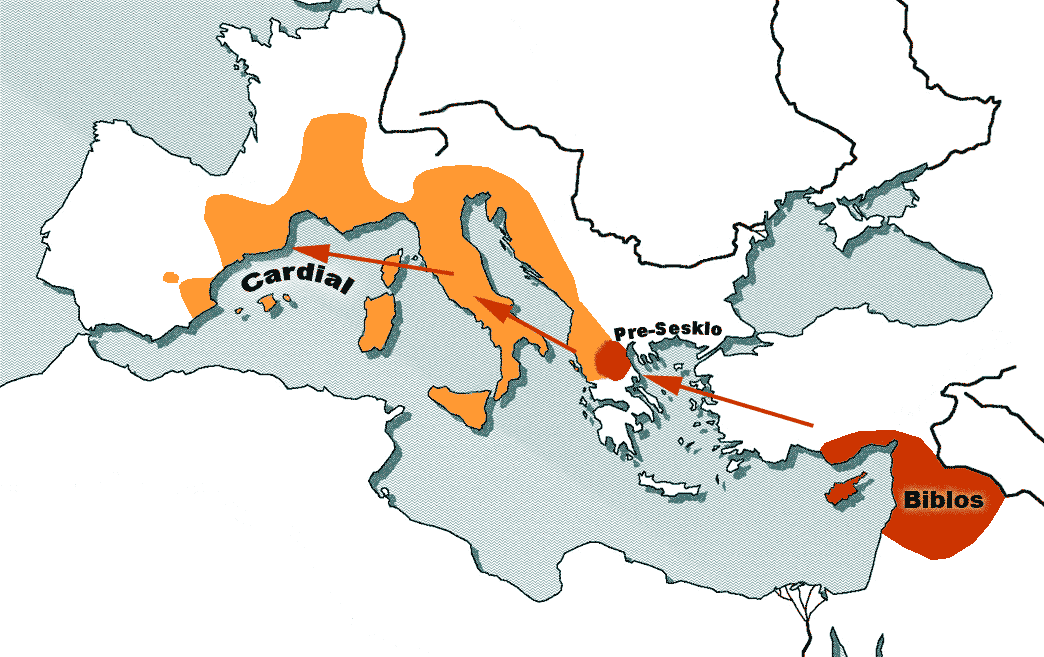Unless Illyrian was a dialect/sub group of Raetic script which also involves , venetic, lepontic, camunic , liburnic and noric. These where all mostly absorbed into celtic-gallic script and later latin
some linguistics say raetic is semetic.............i do not know
I find all these posts full of imagination - but what have we about the basque language question (already spoken about in older threads, I think, and in other fora)
-non I-Ean language, with a very different syntaxic structure-
-phonetically very different from the western and eastern romance dialects of Iberia, but maybe with some phonetical influence (substrata?) upon northern romance dialects of Iberia (castillan)
- some possible imput in structure of neo-celtic languages
-historically and phonetically some links with more northern lands (old Aquitania until southern Poitou!)
-genetically (swifty diverse autosomals poolings) between western 'mediterraneans' (Sards) and 'north-atlantic' components, with few eastern 'caucasian' and 'arabic-southwest asian' elements, and showing globally a more north and northwestern penetration in Europe than 'sardinian', depending on the ways of pooling: old even if rare components in North until Finland -
the HLA analysis show links with North Atlantic populations, with West-Central Europe populations, with other iberic populations and Sardinians and a few links even with Algerians of Alger: ( the older components of AFN???)
- strong Y-R1b domination (with 18% R-L145/L21) upon a Y-I2a1 minority
-I would tempted to say: rather and ancient enough population, at least of Mesolithic origin for the most, with some paleolithic remnants in female DNA - even the 'mediterranean' elements could correspond to a first wave preceding true Neolithic there but WE KNOW BY ARCHEOLOGY AND SKELETONS STUDIES THEY RECEIVED A TASTE OF MEGALITHIC PEOPLE AUTOSOMALS GENES AT NEOLITHIC (not too much the Cardial people ones, rather subsequent wave akin to Long Barrows people, the result being a higher statured type of higher face than other neolithic so called 'mediterraneans') >> changes compared to bones structure of the Azilean preceding people -
- no evident link with any non I-Ean known language of today: some unprecise similtudes with some Caucasus groups of Language, and also with SIberian languages according to the different interpretations
- evocated possible presence of proto-basque as substrata in today Finnic language of Saami (Lapps) -
as we know language shift can occur during history we cannot be sure the basic ancient basque people did not take a new language from people came through Mediterranea... but the supposed extension of a proto-basque far to North seems discarding this last hypothesis...
all that troubles me and I made some hypothesis in other threads concerning R1b, basque language and a northern trail - Maciamo has other thoughts -
I think, no offense, this thread is doing "dobble" with other threads and its place would be in LINGUISTIC
have a good night all




